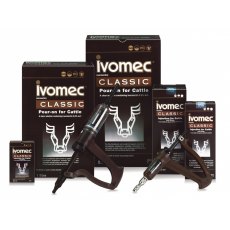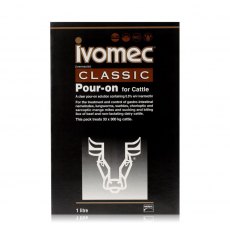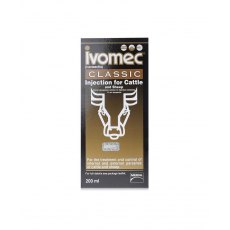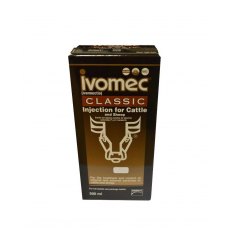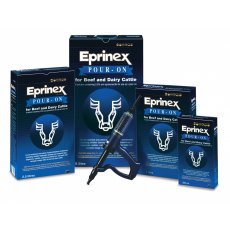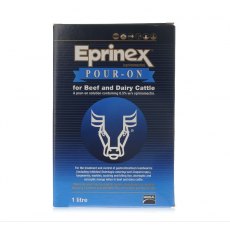Managing your pasture to master the parasites
Reflecting on the performance of your stock over the past 12 months, have you got any niggling suspicions that parasites could be holding back their productivity, growth, or performance? Or perhaps you feel you could have caught that parasite infection sooner?
It’s also understandable if you haven’t given it too much thought, because there is a lot going on at the moment…both on farm, and in the world.
But with cows turned out, it’s time to turn our attention to the parasite threat that may be present on the pasture, infecting grazing livestock with every bite of grass they take.
You might be wondering how you can optimise the performance of your herd or flock in a way that’s responsible, profitable, and sustainable. The challenge in setting such a strategy lies in the range of variables:
- The type of stock
- The age of stock
- The farm’s topography
- The farm’s facilities
- The farm’s parasite dynamic
- The climatic conditions
To reduce the risk of parasites impacting on your stock’s productivity and your profits, have a chat with your vet to plan a pasture management strategy that controls parasites in a sustainable and economical way.
What is the link between pasture and parasites?
In the UK we commonly experience periods of wet and warm weather during the spring and summer grazing season. This is when our livestock are particularly susceptible to the production-limiting effects of parasites.
Read about the parasites that particularly concern cattle in the UK:
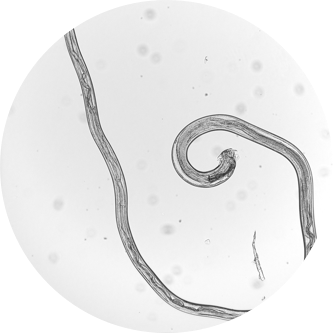
Gutworm species
(Ostertagia ostertagi and Cooperia spp.)
These small worms can impact on the condition, growth, and fertility of young dairy and beef cattle.
The gutworm burden carried by young cattle typically increases from spring into summer. Grazing cattle initially become infected by small numbers of worm larvae that have survived on the pasture over the winter. Cattle begin to shed eggs onto pasture around three weeks after infection. These eggs hatch and develop into infective larvae in warm, moist conditions. Pasture contamination can rapidly increase on ground grazed by young cattle that have not yet developed immunity to worms. This can lead to animals developing heavy worm burdens, resulting in parasitic gastroenteritis which typically manifests as weight loss and scour.

Lungworm
(Dictyocaulus viviparus)
Most commonly seen in young cattle in their first and second grazing seasons, these worms can cause severe respiratory disease and leave animals susceptible to secondary bacterial pneumonia. Lungworm infection can negatively impact a cow’s long-term lung health and overall future production potential. Lungworm is increasingly being seen in adult cows that have insufficient immunity to this parasite.
Lungworm infection usually occurs from July onwards, and has become more prevalent in recent years, especially where livestock are turned-out early. Adult female worms produce eggs that hatch in the lungs. The first stage larvae are coughed up into the mouth and swallowed before passing out with the dung. The larvae develop in the dung pat then migrate onto the grass or get propelled by an exploding fungus that grows on manure. Larvae that are ingested by grazing cattle penetrate the gut and migrate to the lungs, where they develop to adults within four weeks. Clinical signs associated with lungworm can be seen as early as eight days after infection when the immature larvae reach the small airways of the lungs, and become more severe as infection progresses.
Both gutworm and lungworm will impact on the productivity and profitability of your herd if not controlled effectively.
How to plan and prepare to beat the parasites
Here’s our six-step strategy for managing your pasture to control parasites, from our SQP animal health advisors for beef, sheep, and dairy farmers.
1. PRIORITISE YOUNGSTOCK
Start mapping your grazing rotations now – allocating lower-risk fields to higher-risk stock – in the early grazing period. Plan to prioritise new leys, silage aftermath, and fields that haven’t grazed cattle during the past 12 months, for youngstock. Older stock can then follow on, once the pasture is lightly contaminated with worm eggs.
2. AVOID OVERGRAZING
Don’t allow your cattle to graze your pastures to the extreme or too close to the ground where parasites reside. Grazing short grass will increase the likelihood of parasite consumption. Use a plate meter to monitor grass growth and create a grazing budget so that pasture utilisation is optimised.
3. ROTATE BETWEEN SPECIES
Rotating grazing between cattle and sheep or co-grazing different types of livestock can help to break the worm lifecycle and reduce pasture contamination. However, it's important to remember that
unlike the main gut worm species, liver fluke can infect both cattle and sheep.
4. WEAN LAMBS EARLIER
If ewes are lean, grass height is below 4 cm, or lambs are growing less than 150g/day, consider weaning lambs earlier than 12 weeks to avoid larvae build-up.
5. TARGET YOUR TREATMENTS
Don’t follow old routines for routine worming treatments. Instead, assess and test your stock to determine whether they need to be treated. When performance targets are not being met in the face of good nutrition, a high parasite burden is likely. Once immunity begins to develop, after about a month of exposure to worms, FECs will not provide a reliable indication of level of worm burden that individual cattle are carrying. However, regular pooled FECs can provide insights into infection dynamics and the number of eggs being shed onto the pasture. It is desirable to allow a low level of egg shedding to take
place before treatment occurs to maintain refugia and reduce selection for resistance, however if high numbers of eggs are shed onto pasture in the early grazing season then this will increase the risk of outbreaks of parasitic gastroenteritis later in the year.
6. FARM YOUR WORMS AS WELL AS YOUR CATTLE.
By proactively managing the level of gutworm larvae present on the pasture you can reduce the risk of infection, and also of selecting for wormer resistance. Although it can seem counterintuitive, a low level of pasture contamination with eggs shed by animals that have not yet been treated is desirable. This sub-population of worms, often referred to as 'refugia' will lightly reinfect cattle after treatment and 'dilute' any worms that survived treatment, helping to ensure that the genes for resistance stay at a low prevalence in future generations.
What should you treat cattle with this spring?
When it comes to parasites, there is significant year-to-year, farm-to-farm, group-to-group, and pasture-to-pasture variation. Your vets are here to help you target the right worms at the right time with the right product at the right dose.
A tried and trusted treatment for gutworm and lungworm in beef cattle and non-lactating dairy cattle.
Do not use in cows producing milk for human consumption. Do not use in non-lactating dairy cows including pregnant heifers within 60 days of calving.
A tried and trusted treatment for gutworm and lungworm in beef cattle and sheep.
Do not use in cows producing milk for human consumption. Do not use in non-lactating dairy cows including pregnant heifers within 60 days of calving.
A recommended treatment for gutworm and lungworm in lactating dairy cows (zero-milk withhold), dairy youngstock, and all ages of beef cattle.
An educational service from Boehringer Ingelheim Animal Health UK Ltd (“BI”). Further information available from BI, RG12 8YS, UK. ©2023. All rights reserved. Date of preparation: Mar 2023. Use Medicines Responsibly
- 2nd May 2023

